Satanism Black Massby religion-cults.com
NOTICE: THIS WORK MAY BE PROTECTED BY COPYRIGHTYOU ARE REQUIRED TO READ
THE COPYRIGHT NOTICE AT THIS LINK BEFORE YOU READ THE FOLLOWING WORK, THAT IS AVAILABLE SOLELY FOR PRIVATE STUDY, SCHOLARSHIP OR RESEARCH PURSUANT TO 17 U.S.C. SECTION 107 AND 108. IN THE EVENT THAT THE LIBRARY DETERMINES THAT UNLAWFUL COPYING OF THIS WORK HAS OCCURRED, THE LIBRARY HAS THE RIGHT TO BLOCK THE I.P. ADDRESS AT WHICH THE UNLAWFUL COPYING APPEARED TO HAVE OCCURRED. THANK YOU FOR RESPECTING THE RIGHTS OF COPYRIGHT OWNERS.
"Satanism", is the worship and imitation of the biblical Satan or Lucifer. It is the antithesis of Judaism and Christianity. Satan is referred as the brother of Christ, the one who was cast out of heaven, and whom the Satanists worship. Condemned by the Bible and the Church.
The "emblem", is a pentagram, like the one of witchcraft, but inverted, with the face of Satan on it. It is not witchcraft, although in practice the edges of Satanism and Witchcraft are blurred.
The "credo", is summed up in "do what thou wilt shall be the whole of the Law",coined by Crowley in "The Book of the Law".
There are two kinds of Satanism:
1- Those who believe that Satan exists and is a powerful force ... withanimals and children sacrificed to worship him and get his favors, and theBlack Mass as the main rite.
2- Those who believe that Satan does not exist, but it is merely the symbol or personification of fleshy human desires and appetites ... and they try to imitate it, with all kind of sins, pleasures and selfishness,lying, steeling, killing ...
Categories of Satanists:
There are not many Satanists, may be less than 10,000 in the world! ...only curiosity and sensationalism pays them much attention, and the actual satanic activity has been greatly exaggerated.
But there are several categories:
1- Group secretive Satanists: They believe that Satan really exists.
The "Traditional", hate Christianity, celebrate the Black Mass, in the cup they drink blood of a sacrificial animal or human, to mimic the Mass.
"Nontraditional", from Neo-Platonism, Eastern Mysticism, and Islam, or off-shots of the Kabbalah, Theosophy, Rosicrucianism, Freemasonry ... the"blood" they drink is not necessarily a parody of the Catholic Mass, butto partake of the "fire energy" that blood provides.
2- Public Church Satanists:
No secret, hold worship services open to the public, based mostly on the writings of Anton LaVey's "Satanic Bible", and they believe that Satan is a symbolic force: The Church of Satan of LaVey, Temple of Set. The Church of Thelema of Crowley, the Order of the Golden Down, and derivations of the Ordo Templi Orientis (OTO), may also be included in this category.
3- Youth Gang Satanists, that may or may not believe that Satan exists: "Dabblers" who see Satanism as a symbol of rebellion against any authority. For most, interest in Satanism is a passing fad influenced by drugs, sex, and rock-and-roll, but with serious consequences, like in the spectacular case of Charles Mason, or Andrew Newell who stabbed his mate to death, or Peter McKenzie who sexually abused 13 children.
4- Individual Satanists, often disturbed individuals,neurotic or psychotic, like most Satanists!
Morality of Satanism:
"Do what you will" is the general principle. What is "bad" in the Bible becomes "good"; sin!, and Satan will be with you! ... they call it"freedom of choice"; they believe to get powers to perform magic by doing evil acts.
At the low level, they burn crosses, spray Satanic graffiti, dig up graves...
A higher level is by burning churches, doing all kind of sexual aberrations,stealing, drugs ...
Children sexual abuse is a higher level ... and, of course,the ultimate evil is "killing", children or adults, the greatest release of magical energy.
Black Mass:
This is the ultimate rite for a real Satanist to obtain magic powers: A blasphemous Mass, where the altar is a nude woman, and the vagina is the tabernacle. If possible, a real Host stolen from a Catholic Church is placed in the vagina in the midst of reciting distorted psalms with hot music and all kind of obscenities, cursing Jesus and honoring Satan. The fake priest ends up having real sex, with the Host still in the vagina.
If a baby can be slaughtered during the ritual, they will drink his blood and eat his flesh, to mimic the most the Eucharist ...
Ideally, a Black Mass is to be celebrated by a "real heretic Priest",that, even in sin, can celebrate Mass effectively.
The prayers end with the strongest expression of Satanism: "Shemhaforash",the word pronounced by God when he created the World, and, while spitting on a cross or stepping on it, they all cry out "Hail, Satan".
And,of course, it may end up with a sexual orgy with all kind of abominations and abuses, under the influence of drugs.
Groups of Satanists Today:
1-The "Traditional Secretive Satanists":
They are the "real thing", with the Black Mass, and their number is unknown, though it is estimated in "hundreds" in the world.
2- The "Non-Traditional" Satanists:
These believe that Satan exists, honor him, pray to him, but the celebrations are very different in each group.
3- "Aleister Crowley", (1875-1947) never considered himself a Satanist, but his writings, "The Book of the Law" and "The Equinox" became the basis for modern Satanism. In 1920 he founded an "Abbey of Thelema" in Cefalu, Sicily, considered Satanism, to destroy Christianity. It was brought to America by Jack Parsons who blew up himself experimenting with drugs. Crowley did in England what LaVey did in America, he became a drug addict, and his son mysteriously died during a private ritual that only the two attended. Afterward, Crowley became a babbling, incoherent idiot.A Black Mass was performed at his funeral.
4- "Ordo Templi Orientis (OTO)", emphasizes sexual magic. Some derivative satanic groups have come forth from OTO in America: OTO, in Fort Myers, Florida; in Dublin, California; Ordo Templi Astarte (O.T.A.),or Church of Hermetic Science; Bennu Phoenix Temple of the Hermetic Order of the Golden Down ...
5- The Church of Satan:
Founded, by Anton S. LaVey in San Francisco, California, in 1966, on Walpurgisnach or April 30, the most celebrated feast of the Witchcraft.
LaVey, appeared as the Devil in the film "Rosemary's Baby", and was technical director of another film, "The Devil's Rain". His most famous disciple was Sammy Davis Junior, who later regretted experimenting with Satanism. Film star Jaine Mansfield was also a member of the Church of Satan, which has an estimated 5,000 members.
On "The Satanic Bible", the "9 Satanic Statements" claim that "Satan represents indulgence, instead of abstinence". Represents materialism, instead of pipe dreams. Vengeance,instead of turning the other cheek. Satan represents man as just another animal, more often worse, the most vicious animal of all!.
"Here and now is our day of joy", proclaims, "eye for eye, tooth for tooth, aye four-fold, a hundred fold!"... kindness to those who deserve it, but if you want to kill them, do it!, morally or physically, because the main doctrine is "do what you want".
It falls in the category of "public Satanism", with a symbolic Satan...but in the rites, "a nude woman" is the altar... and that's non only symbolic!.
In the prayers, Satan is invoked and honored, and Jesus Christ is cursed ... and that's not jut a symbol !... 19 prayers are recited in "enochian language", a kind of old Arabic not spoken by anyone,and some of them end with this English translation: "Be friendly unto me, for I am the same!- the true worshiper of the highest and ineffable King of Hell".
In "The Satanic Rituals", there are some of the highly offensive and blasphemous words for a Black Mass: "Thou, thou who, in my capacity of Priest, I force, weather thou wilt or no, to descend into this host, to incarnate thyself into this bread Jesus,artisan of hoaxes, bandit of homages, robber of affection- hear!... O lasting foulness of Bethlehem, we would have thee confess thy impudent cheats, thy inexplicable crimes!. We would drive deeper the nails into thy hands, press down the crown of thorns upon thy brow, and bring blood from the dry wounds...
...cursed Nazarene, abstractor of stupid parities, impotent king, fugitive god!... O Infernal Majesty, condemn him to the pit, evermore to suffer in perpetual anguish. Bring Thy wrath upon him, O Prince of Darkness..."
But what is more scary, is to think that every time "we sin", you and I, "we crucify again the Son of God, making a public mockery of Him" (Hebrews 6:6)... my be LaVey is right in something!... when we sin, you and I, are worse than animals, the most vicious animals of all!... may Jesus have mercy of all of us!. Thank you, glorious Jesus, my Redeemer, the King of Kings, and the Lord of Lords... and in the name of Jesus Christ I order Satan to get out of the heart of any Satanist or Witch who may read these lines. Thank you, dear Jesus, the King of Glory, you are dethroning Satan from many hearts every day, right now!. Praise to you, Jesus of Nazareth,the only one God, to whom is all the praise and glory and honor for ever and ever. Amen.
6- "Temple of Set":
It is an offspring of LaVey's Church of Satan, founded in 1975 by
US Lieutenant Colonel Michael Aquino,with 1,000 members. The name "Set" comes from the
Egyptian god Set-Ham. It claims to be more moral than the Church of Satan! ... but Aquino maintains an avid interest in Nazi culture, and Nazi insignia are occasionally worn by members of the Temple.
It has a functioning British branch, with only 55 members, but well-organized: David Austern sits in his word processor and instructions zipto and fro across the Atlantic. The "Temple" is a black fabric-lined garage, with black carpet and a black-draped altar decorated with black candles and a plastic skull. Austern is a homosexual.
7- "The Society of the Dark Lily", is run by a women who suffers from multiple sclerosis. The farm in Scotland where she lives is the headquarters of the organization, and the scene of debauched, sadistic beating of naked young girls.
8- "Young Gang Satanists":
Teenage dabblers is the third category of Satanists mentioned, and probably the largest.
Adolescents, are notoriously easily bored,perpetually on a quest for the different. They are naturally curious about spiritual matters, and are likely to rebel against the conventions of their upbringing. The occult, and especially its false promise of powers to change both themselves and the world, is a compelling lure, and there are "many points of entry" of Satan:
1- "A Friend",is the main "point of entry" of Satan: Many teenagers become "rebels"against their parents and the establishment, but "slaves" to their friends:
If the friend uses pants with a hole in the back, he is got to use it! ... if he is on the occult, he is got to try it, and be even more daring! ...
2- "Fantasy Games",are also good points of entry: of Satan Ouija, Tarot Cards, Dungeons and Dragons (D and D) ... This one, the respectable D and D, is very dangerous: You don't need boards, only a pencil, paper, and your imagination. Each player assumes the identity of a character of his choice, he becomes an "actor", and so familiar with the character, that he may end up becoming one with him ... most characters worship a deity, and some of them can cast spells and do magic ...
Don't get into these apparent respectable games. They may look harmless fun ... but many have end up in sexual abuse, insanity, suicide, murder... and they are an easy point of entry into the dabbling Occult and Satanism ...
3- "Heavy Metal Music",is another good route into the Occult and Satanism, and into death and suicide: Among the songs that blatantly proselytize Satanic rituals and the Occult, are:
- "Show no Mercy", by Kerr King, who shuts out, "in Lord Satan we trust".
- "Sabbath Bloody Sabbath", by Black Sabbath.
- "Shout at the Devil", by Motley Crue.
- "Holy Hell" by Possessed, with references to defiled crosses, black masses, magic, and ends up with "kill the people, cut the heads, cut the throats".
- Ozzy Osbourne, in "Suicide Solution".
- "Kill 'Em All", by Metallica.
- The groups Judas Priest, KISS, Iron Maden...
4- "Adults", also actively recruit youngsters into the Occult and Satanism, with the lure of free drugs, drink and promiscuous sex ...
Satanism in the"Catholic Church"?:
Satan attacks the Church from "without" (1 Peter), and from "within" (2 Peter). There is a kind of Satanism when someone proclaims in the Church:
- The Bible is "not" the word of God.
- A person called "Satan" does not exist.
- We do not have to accept the teachings of the Church or the Pope on matters of faith and morals
- Christ did not resurrected physically.
- Jesus in not really present in the Eucharist.
- Fornication, adultery, abortion, homosexual relations, masturbation is not always wrong.
- If you have a "mortal sin", you do not have to confess before receiving the Holy Eucharist.
These "Satanic doctrines" are taught in some Catholic seminaries,universities, work-shops, and have found the way in some textbooks and pulpits.
4- Fetishes, Talismans,Amulets, Charms, Superstitions, Potions,Curses, Spells, Magic Prayers, Spoils (In Spanish: Despojos, Riegos,Velaciones).
This is the fourth group of "Magic".
-Some of them may look harmless, but all of them are to honor the Devil and trust in him, not in God!, and that's why the Bible condemns all of them as "prostitution against God".
There is much "ignorance" on this, not usually malice ... but if you drink a poison by ignorance, you are going to die, even without malice... and in the name of Jesus Christ I order the Devil to get out of any person who reads these lines and is wearing or practicing any of the above... Thank you, Jesus, I praise you, because you are enlightening and delivering many people every day ... right now!
"Fetish":A Portuguese word meaning "enchantment", is an object or potion or writing given by a witch with false magic powers.
"Talisman": An Arabic word, "tilsman",meaning "magnet of power", is an object held to have magical or protective powers: A rock, a crystal, a metal, a doll, a cloth... a ring, a bracelet,a chain... throw them away!... Trust in Jesus!... get a crucifix... the rings, bracelets, and colors of Astrology honor Satan... those wore just for adornment or therapy have nothing to do with this.
"Amulet":An Arabic word, "hamelet", which means "hanging": It is like a talisman against evil or injury, or for good luck: A medal with a chain around the neck, a stone hanging in the neck, a pendent... the difference between an"Amulet" and a "Christian Medal", is that the Amulet honors Satan and his Demons, placing the trust in them, while the Christian Medal honors God and his Saints, placing the trust in them...
The Astrological or Santeria medals honor the Devil ... throw them away, wear instead a medal of Jesus or his Mother, or any real Christian Saint ...the Astrological or Santeria collars, honor Satan ... get rid of them !...wear instead a Christian Rosary.
"Charm": A small ornament worn on a chain or bracelet. When worn for its purported magical or luck effects, they are of Satan, like any amulet or talisman.
"Superstition":It is a belief, practice, or rite, that is maintained despite evidence that it is unfounded or irrational ... we all know about them ... forget them!, don't place your life on an irrational chance or magic, place it in the hands of the real God ... trust in God!.

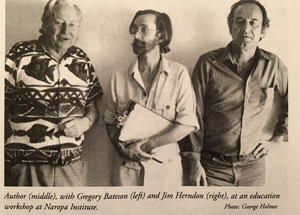
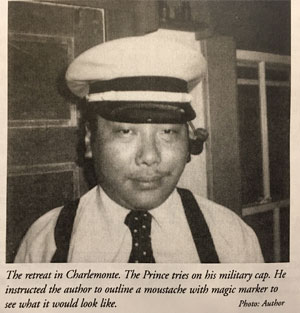
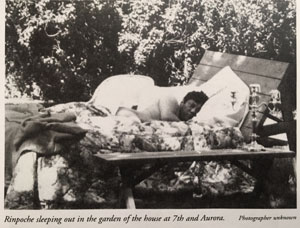
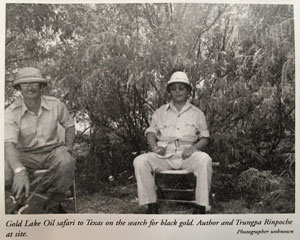
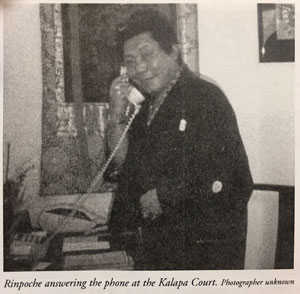
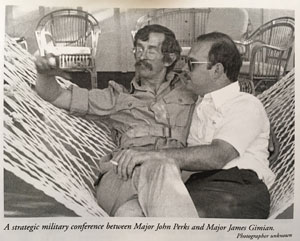
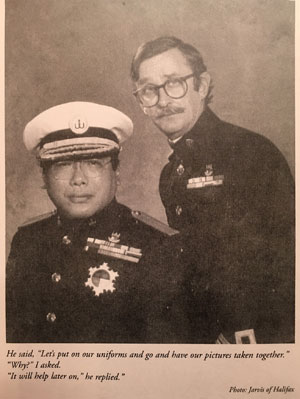
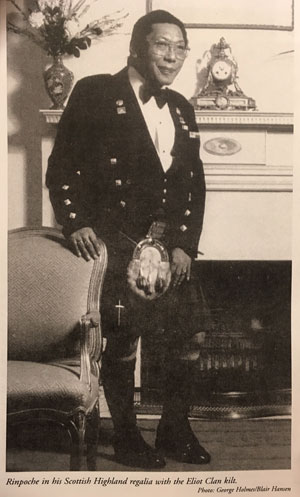
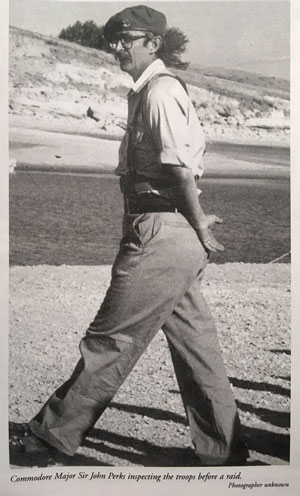
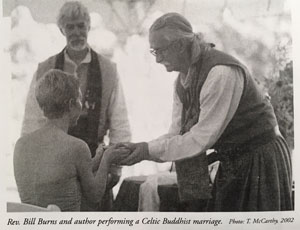
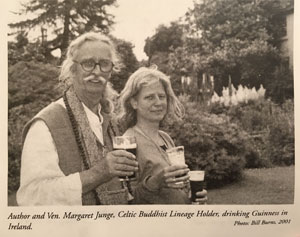
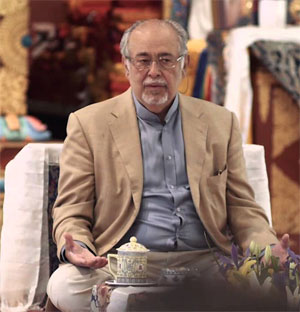
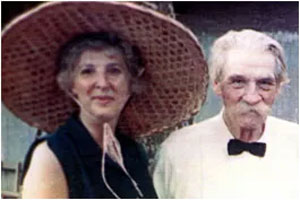
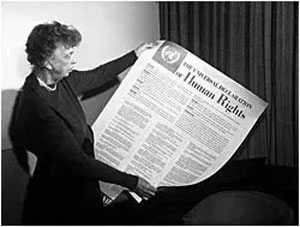
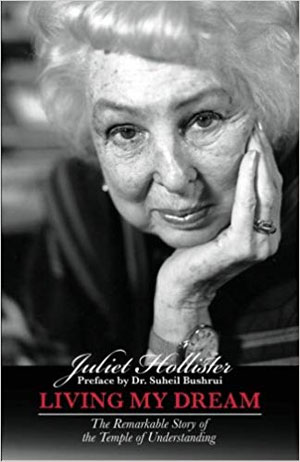
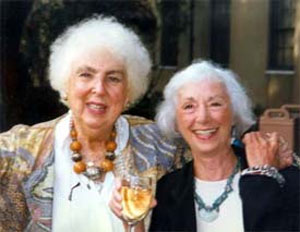
 ), but the sun is below and tries to draw you down. But you draw a line above the below and long for the above and are completely at one. There the serpent comes and wants to drink from the vessel of the below. But there comes the upper cone and stops. Like the serpent, the looking coils back and moves forward again and afterward you very much (--) long to return. But the lower sun pulls and thus you become balanced again. But soon you fall backward, since the one has reached out toward the upper sun. The other does not want this and so you fall asunder, and therefore you must bind yourselves together three times. Then you stand upright again and you hold both suns before you, as if they were your eyes, the light of the above and the below before you and you stretch your arms out toward it, and you come together to become one and must separate the two suns and you long to return a little to the lower and reach out toward the upper. But the lower cone has swallowed the upper cone into itself, because the suns were so close. Therefore you place the upper cone back up again, and because the lower is then no longer there, you want to draw it up again and have a profound longing for the lower cone, while it is empty Above, since the sun Above the line is invisible. Because you have longed to return downward for so long, the upper cone comes down and tries to capture the invisible lower sun within itself. There the serpent's way goes at the very top, you are split and everything below is beneath the ground. You long to be further above, but the lower longing already comes crawling like a serpent, and you build a prison over her. But there the lower comes up, you long to be at the very bottom and the two suns suddenly reappear, close together. You long for this and come to be imprisoned. Then the one is defiant and the other longs for the below. The prison opens, the one longs even more to be below, but the defiant one longs for the above and is no longer defiant, but longs for what is to come. And thus it comes to pass: the sun rises at the bottom, but it is imprisoned and above three nest boxes are made for you two and the upper sun, which you expect, because you have imprisoned the lower one. But now the upper cone comes down powerfully and divides you and swallows the lower cone. This is impossible. Therefore you place the cones tip to tip and curl up toward the front in the center. Because that's no way to leave matters! So it has to happen otherwise. The one attempts to reach upward, the other downward; you must strive to do this, since if the tips of the cones meet, they can hardly be separated anymore --therefore I have placed the hard seed in-between. Tip to tip -- that would be too beautifully regular. This pleases father and mother, but where does that leave me? And my seed? Therefore a quick change of plan! One makes a bridge between you both, imprisons the lower sun again, the one longs for the above and the below, but the other longs especially strongly for the forward, above and below. Thus the future can become -- see, how well I can already say it -- yes, indeed, I am clever -- cleverer than you -- since you have taken matters in hand so well, you also get everything beneath the roof and into the house, the serpent, and the two suns. That is always most amusing. But you are separated and because you have drawn the line above, the serpent and the suns are too far below. This happens because beforehand you curled around yourself from below. But you come together and into agreement and stand upright, because it is good and amusing and fine and you say: thus shall it remain. But down comes the upper cone, because it felt dissatisfied, that you had set a limit above beforehand. The upper cone reaches out immediately for its sun -- but there is nowhere a sun to be found anymore and the serpent also jumps up, to catch the suns. You fall over, and one of you is eaten by the lower cone. With the help of the upper cone you get him out and in return you give the lower cone its sun and the upper cone its as well. You spread yourself out like the one-eyed, who wanders in heaven and hold the cones beneath you -- but in the end matters still go awry. You leave the cones and the suns to go and stand side by side and still do not want the same.
), but the sun is below and tries to draw you down. But you draw a line above the below and long for the above and are completely at one. There the serpent comes and wants to drink from the vessel of the below. But there comes the upper cone and stops. Like the serpent, the looking coils back and moves forward again and afterward you very much (--) long to return. But the lower sun pulls and thus you become balanced again. But soon you fall backward, since the one has reached out toward the upper sun. The other does not want this and so you fall asunder, and therefore you must bind yourselves together three times. Then you stand upright again and you hold both suns before you, as if they were your eyes, the light of the above and the below before you and you stretch your arms out toward it, and you come together to become one and must separate the two suns and you long to return a little to the lower and reach out toward the upper. But the lower cone has swallowed the upper cone into itself, because the suns were so close. Therefore you place the upper cone back up again, and because the lower is then no longer there, you want to draw it up again and have a profound longing for the lower cone, while it is empty Above, since the sun Above the line is invisible. Because you have longed to return downward for so long, the upper cone comes down and tries to capture the invisible lower sun within itself. There the serpent's way goes at the very top, you are split and everything below is beneath the ground. You long to be further above, but the lower longing already comes crawling like a serpent, and you build a prison over her. But there the lower comes up, you long to be at the very bottom and the two suns suddenly reappear, close together. You long for this and come to be imprisoned. Then the one is defiant and the other longs for the below. The prison opens, the one longs even more to be below, but the defiant one longs for the above and is no longer defiant, but longs for what is to come. And thus it comes to pass: the sun rises at the bottom, but it is imprisoned and above three nest boxes are made for you two and the upper sun, which you expect, because you have imprisoned the lower one. But now the upper cone comes down powerfully and divides you and swallows the lower cone. This is impossible. Therefore you place the cones tip to tip and curl up toward the front in the center. Because that's no way to leave matters! So it has to happen otherwise. The one attempts to reach upward, the other downward; you must strive to do this, since if the tips of the cones meet, they can hardly be separated anymore --therefore I have placed the hard seed in-between. Tip to tip -- that would be too beautifully regular. This pleases father and mother, but where does that leave me? And my seed? Therefore a quick change of plan! One makes a bridge between you both, imprisons the lower sun again, the one longs for the above and the below, but the other longs especially strongly for the forward, above and below. Thus the future can become -- see, how well I can already say it -- yes, indeed, I am clever -- cleverer than you -- since you have taken matters in hand so well, you also get everything beneath the roof and into the house, the serpent, and the two suns. That is always most amusing. But you are separated and because you have drawn the line above, the serpent and the suns are too far below. This happens because beforehand you curled around yourself from below. But you come together and into agreement and stand upright, because it is good and amusing and fine and you say: thus shall it remain. But down comes the upper cone, because it felt dissatisfied, that you had set a limit above beforehand. The upper cone reaches out immediately for its sun -- but there is nowhere a sun to be found anymore and the serpent also jumps up, to catch the suns. You fall over, and one of you is eaten by the lower cone. With the help of the upper cone you get him out and in return you give the lower cone its sun and the upper cone its as well. You spread yourself out like the one-eyed, who wanders in heaven and hold the cones beneath you -- but in the end matters still go awry. You leave the cones and the suns to go and stand side by side and still do not want the same.